[ad_1]
Did you know, according to a Facebook report, around 1.8 billion people utilize Facebook groups, and 50% of users are a part of five or more groups?
But, what is all the fuss about?
First, let’s highlight why they are essential before illustrating how to create a Facebook Group.
When you create a Facebook Group, you get – organic reach, brand advocates, free promotions, and honest consumer feedback.
Think for yourself.
Why do you join a Facebook – or any – Group? To connect with people with similar interests and get enlightened on your interest, right?
That’s why you must learn how to create a Facebook group to build a brand.
Moving forward, let’s understand the various Facebook groups:
Understanding Different Types of Facebook Groups
Facebook ensures that it is easy for everyone to start a Facebook group. Still, it might be challenging to decide which one to choose.
Here’s a detailed description of each Facebook group for you to easily identify which one’s the best for you:
Public Groups
The name says it all.
Public groups on Facebook are open to everyone. Key details such as the group’s name, location, member list, and posts are visible to all users. Anyone can discover these groups, and joining them is free and doesn’t require any approval.
Advantages
Accessibility to Information: Public Facebook groups provide readily available information to both group members and non-members. This accessibility can be valuable for individuals seeking information on a specific topic.
Public Awareness: Public groups on Facebook can be crucial in spreading awareness about important issues, such as social justice or environmental concerns.
Larger Audience: Public groups typically have a larger membership than private groups, allowing your content to reach a wider audience.
Increased Visibility: Public groups offer greater visibility since non-members can access their content. This visibility can lead to organic traffic and increased exposure for your group.
Disadvantages
Risk of Data Manipulation: The easy accessibility of content in public Facebook groups increases the risk of data manipulation. There’s a possibility that groups with the same name could provide false or misleading information.
Diverse Perspectives: Public groups do not have strict criteria for membership, which can result in a mix of opinions and views. This diversity can sometimes lead to conflicts and disagreements within the group.
Fake Facebook Profiles: Fake Facebook profiles are more common than genuine ones. In public groups, these counterfeit profiles can join quickly and spread propaganda or engage in malicious activities, threatening the group’s integrity.
Closed Facebook Groups
Closed Facebook groups offer a more private setting compared to public groups. While anyone can see the group’s name and member list, only approved members can see the posts and discussions within the group.
Advantages
Enhanced Privacy: The discussions and information shared are restricted to the group’s members, reducing the risk of information leakage.
Focused and Engaged Community: Closed groups attract members who have a genuine interest in the group’s topic or purpose. This can foster a more focused and engaged community, allowing for deeper discussions and connections.
Reduced Spam and Trolling: The closed nature of these groups makes it harder for spammers and trolls to infiltrate and disrupt the discussions. Admins have better control over monitoring and filtering out irrelevant or disruptive content.
Disadvantages
Limited Reach: Due to their private nature, closed groups have a smaller potential audience compared to public groups. The content within these groups remains hidden from non-members, limiting the overall visibility and reach of the group’s message.
Exclusive Access: Closed groups can be exclusionary by design. Some individuals interested in the group’s topic or content may not be able to participate due to the need for approval or membership restrictions.
Potential Echo Chambers: With a restricted membership, closed groups risk becoming echo chambers, where similar perspectives and opinions are reinforced without exposure to diverse viewpoints. This can limit the group’s ability to foster open discussions and consider alternative views.
Secret Facebook Groups
Secret groups offer the highest level of privacy and exclusivity on Facebook. They provide a confidential and secure environment for members to discuss and share information. These groups are not discoverable through Facebook’s search function and require an invitation from an existing member to join.
Advantages
Maximum Privacy: Secret groups are hidden from search engines and non-members, making them suitable for discussions that require a high level of confidentiality or sensitive information sharing.
Safe Space for Discussions: Secret groups create a safe and trusted space for members to engage in discussions. This exclusivity fosters open conversations, as members feel more comfortable privately sharing their thoughts and opinions.
Disadvantages
Challenging to Find and Join: Since secret groups are hidden from search and require an invitation, potential members may have difficulty finding and joining the group unless they are specifically invited by an existing member.
Exclusivity and Inaccessibility: While the exclusivity of secret groups can provide a sense of privacy, it can also create barriers for individuals who may be interested in the group’s content but lack an invitation. This can result in a limited diversity of perspectives within the group.
Choosing the Right Privacy Setting for Your Facebook Group
When it comes to selecting the appropriate privacy setting for your Facebook group, several factors need to be taken into account:
Group Type: If your group is centered around sensitive topics such as mental health or addiction, a more restrictive privacy setting might be more suitable.
Group Size: For smaller groups, a more open privacy setting might be beneficial as it allows people to easily discover and join the group.
Group Purpose: If your group is being used to promote a business or organization, a more open privacy setting can help you reach a broader audience.
After considering these factors, you can determine the most suitable privacy setting for your group. Remember, you can change your group’s privacy setting at any time by clicking on the “Privacy” tab in the group settings page.
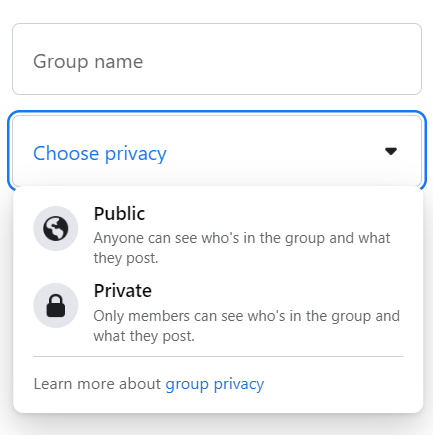
Here are some additional tips to consider when choosing the right privacy setting for your Facebook group:
Notify Members: If you decide to change the privacy setting, make sure to notify your members. This ensures everyone is aware of who can see the group and its content.
Consider Content Sensitivity: Choose a privacy setting that aligns with the sensitivity of your group’s content. If discussions often involve sensitive topics, opt for a more restrictive privacy setting.
Regular Reviews: Your group’s needs may evolve over time, so it’s important to regularly review your privacy settings to ensure they remain appropriate.
Authenticity: Make sure to have a proper group name, description, and cover photo. This not only makes your group more authentic but also makes it easier for people to identify.
How to Create a Facebook Group
Let’s get straight to knowing how to create a Facebook Group:
- Go to Facebook and log in to your account.
- Click on the Groups tab at the top of the page.
- In the left-hand column, click on the Create Group button.

- In the Create a Group window, enter a name for your group.

- Select a group type. You can choose from a public group, a closed group, or a secret group.

- Select a privacy setting. You can choose from Public, Friends of Friends, or Only Me
- Add a description for your group. This will help people understand what your group is about.
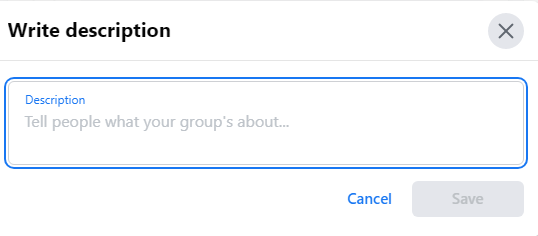
- Upload a cover photo for your group. This will help make your group more visually appealing.
- Click on the Create Group button to create your group.

Once you have created your group, you can start adding members. You can invite people to join your group by sending them a link or by adding them directly. You can also promote your group by sharing it on your timeline or on other social media channels.
How to Create a Private Group on Facebook
By following these simple steps, you can create a private group on Facebook:
- Go to your Facebook profile
- Click on the Groups icon
- Click on the Create Group button
- Select the Privacy option as Private
- Enter a name for your group
- Write a description for your group
- Choose who can join your group
- Click on the Create Group button
- That’s it. You have successfully created a private Facebook group.
Creating a Facebook Group for Your Organization
If you’re seeking an effective way to communicate with your stakeholders, whether they’re customers, employees, or other interested parties, a Facebook group for your organization is an excellent solution. It provides a platform to share information, collaborate on projects, and foster stronger connections.
Here are some reasons why creating a Facebook group for your organization can be beneficial:
Increased Engagement: A Facebook group can boost engagement with your audience. You can post updates, initiate discussions, and ask questions, providing a valuable avenue for feedback and understanding your audience’s needs.
Improved Communication: A Facebook group can enhance communication with your audience. It’s a convenient platform for making announcements, sharing crucial information, and addressing queries, helping to keep your audience informed and engaged.
Enhanced Collaboration: A Facebook group can foster collaboration among team members. It’s a useful tool for sharing files, brainstorming ideas, and working on projects collectively, thereby improving efficiency and productivity.
How to Set Up a Group Linked to Your Organization’s Facebook Page
To set up a group for your organization, follow the steps listed under “How to Create a Facebook Group.”
To ensure the success of your Facebook group, consider the following:
- Choose a relevant and descriptive name for your group.
- Write a clear and concise description of what your group is about.
- Upload a high-quality cover photo that represents your group.
- Be selective about who you add to your group. Ensure that the people you add share the same interests.
- Be active in your group. Regularly post new content and interact with your members.
- Promote your group to your friends and followers.
- By following these tips, you can create a successful Facebook group that helps you connect with people who share your interests.
6 Tips to Engage and Manage Your Facebook Group
1. Create a Welcoming Environment
Creating a welcoming environment is crucial for any Facebook group. It’s not just about having a space for people to connect but also about fostering a sense of community and belonging. Encourage new members to introduce themselves in a welcome post and share their interests or why they joined the group. This can help them feel more connected and engaged.
Moreover, it’s important to establish clear guidelines for behavior within the group. These rules can address issues like respectful communication, what kind of content is allowed, and how conflicts are handled. Regularly remind members of these guidelines and ensure they are easy to find, such as pinning them at the top of the group page or including them in the group description.
Moderation is also key in maintaining a positive environment. This involves monitoring posts and comments to ensure they adhere to the group’s guidelines, resolving disputes, and addressing any inappropriate behavior. This helps to create a safe and respectful space where all members feel comfortable participating.
2. Schedule Regular Posts
Consistency is key to keeping your Facebook group active and engaged. Regularly sharing relevant content can stimulate discussions and keep members coming back. This could include industry news, thought-provoking discussion topics, or valuable resources that align with the group’s interests.
Planning and scheduling posts in advance can ensure a steady stream of content and take the pressure off having to create new posts every day.
Remember, the goal is not just to share content but to encourage interaction. So, try to engage your posts by asking questions, seeking opinions, or including calls to action that prompt members to comment, like, or share.
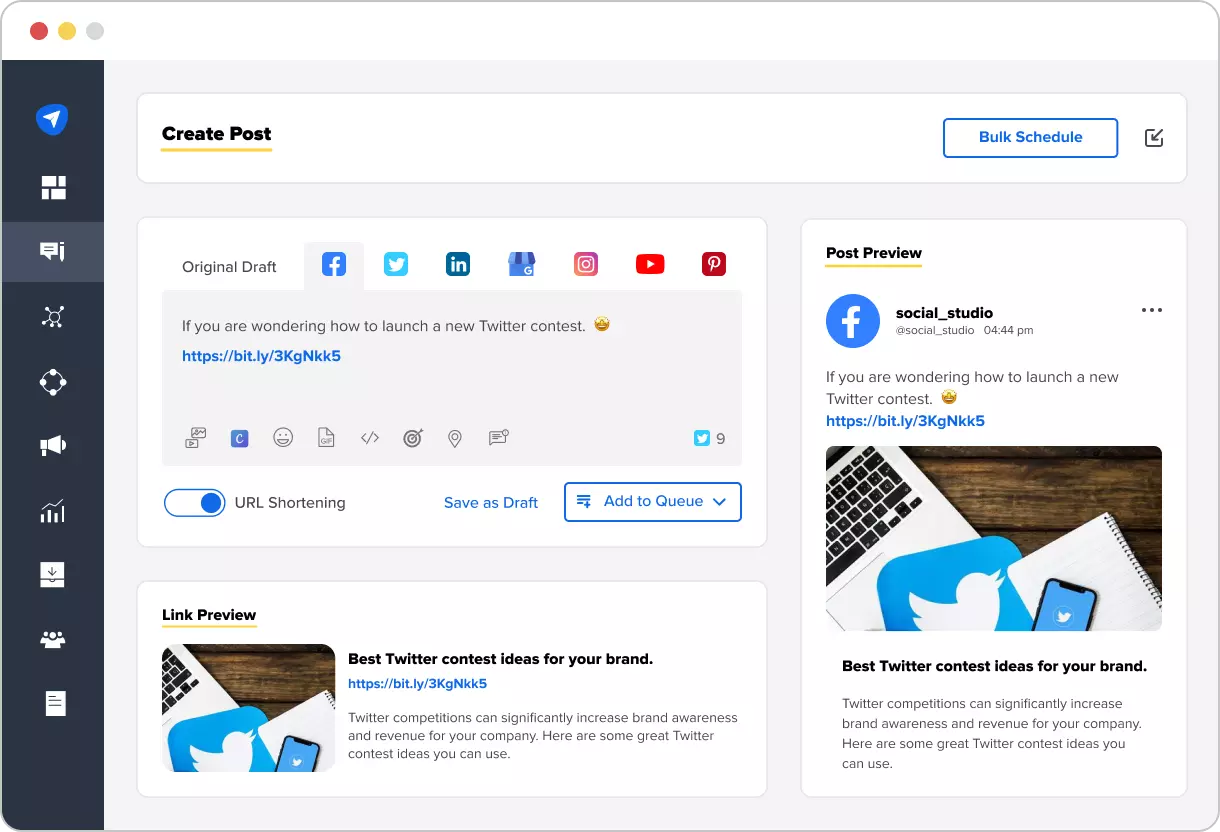
SocialPilot’s Facebook scheduling feature is a game-changer for managing regular posts. It allows you to plan and schedule your content in advance, ensuring that your group remains active and engaged, even during your off-hours. It’s a time-saving tool that helps maintain consistency in your posting schedule.
3. Host Live Events
Live events are a great way to foster real-time interaction and engagement within your Facebook group. This could be in the form of Q&A sessions, webinars, panel discussions, or even informal hangouts.
These events allow members to learn from industry experts or each other, share their insights, and have their questions answered in real time. This can not only boost engagement but also foster a sense of community as members get to interact with each other more directly.
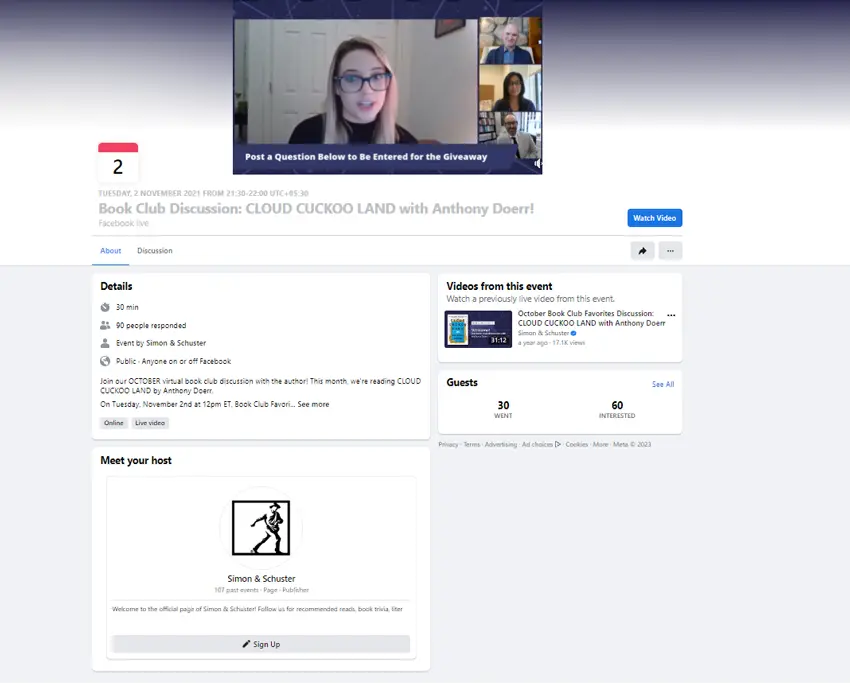
For instance, here is a screenshot of an upcoming live event from a Book Lovers Facebook Group. The event contains all the necessary information, such as the name, time, and cause. It even has a Google Maps link for anyone to visit the event, including other related details.
4. Recognize and Reward Active Members
Active members are the lifeblood of your Facebook group. They contribute to discussions, share valuable insights, and help create a vibrant and engaging community. Recognizing and rewarding these members can go a long way in fostering a sense of belonging and encouraging continued participation.
Consider acknowledging their contributions in a public post, giving them a shout-out during live events, or even awarding badges for their active involvement. You could also feature them as guest moderators for a day or a week, giving them a platform to share their expertise and interact more closely with other group members.
Remember, recognition doesn’t always have to be grand gestures. Sometimes, a simple thank you, or acknowledgement can make members feel valued and appreciated.
5. Facilitate Networking and Collaboration
One of the greatest benefits of a Facebook group is the opportunity for networking and collaboration. Encourage this by creating threads or designated spaces for members to introduce themselves, share their professional backgrounds, or discuss their interests and goals.
Encourage members to collaborate on projects, share resources, or seek advice from the community. This fosters a sense of community and provides members with valuable opportunities for professional growth and learning.
Remember to facilitate these discussions and ensure they remain respectful and productive. As a group admin, your role is to guide these interactions and ensure they align with the group’s purpose and guidelines.
6. Run Challenges, Contests, or Polls
Adding an element of fun and excitement can significantly boost engagement in your Facebook group. Consider running challenges, contests, or polls to engage your members in a fun and interactive way.
This could be a photo challenge where members share pictures related to a specific theme, a caption contest where the best caption wins, or a poll to gather opinions on a relevant topic. These activities encourage participation, spark conversations, and add an element of friendly competition.
Remember, the key is to align these activities with the interests of your group members and the purpose of your group. This ensures that your activities are relevant and engaging for your members.

The screenshot above shows a poll created by Addy Mark, a company celebrating its 5th anniversary. The poll asks small businesses to vote for their preferred service.
Analyzing and Monitoring Your Facebook Group’s Performance
One of the most crucial steps in creating and managing a Facebook group is to analyze and monitor your group’s performance. This is where Facebook Group Insights comes into play.
This powerful tool allows you to track engagement and monitor your group’s activity levels, providing valuable data to understand your group’s performance and make informed decisions to improve engagement.
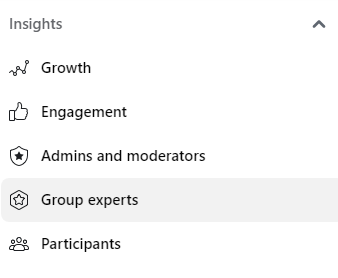
To access Facebook Group Insights, navigate to your group’s main page and click the “Insights” tab at the top. Once in the Insights section, you’ll find a range of data that can help you gauge the effectiveness of your strategies.
Key metrics to track include:
Post Engagement: These metrics provide insights into how members interact with your content. Analyze metrics such as likes, comments, and shares to gauge the effectiveness of your posts. Look for trends in engagement and identify the types of posts that generate the most interactions.
Active Members: This data shows the number of members actively engaging with your group. Monitor this metric to understand how many members regularly participate and contribute to discussions. It also helps identify any drop-offs or spikes in activity over time.
Popular Times for Posting: This data helps you determine the optimal times to share content to maximize visibility and engagement. Pay attention to patterns in member activity and adjust your posting schedule accordingly.
After analyzing the data from Facebook Group Insights, you can evaluate your group’s performance and optimize your strategies for maximum benefits. Here are a few changes you could consider:
Adjusting Post Frequency: Analyze engagement metrics and member activity to determine the ideal posting frequency. Post during the most active hours to attract more traffic.
Modifying Group Rules: Review member activity and identify any violations of group rules or behavior that may be hindering engagement. Consider updating or clarifying group rules to encourage positive interactions and maintain a welcoming environment.
Revising Content Strategies: Experiment with varying content styles to keep members interested and engaged. If specific topics or formats consistently generate more engagement, prioritize creating more of that content.
Engaging with Active Members: Identify highly active members, encourage their contributions, ask for feedback, and recognize their valuable insights. Building relationships with active members can create a sense of community and encourage others to participate.
By harnessing the power of Facebook Group Insights, you can effectively analyze and monitor your group’s performance, leading to improved engagement and a thriving Facebook group.
Conclusion
Creating a Facebook group is a powerful way to instill a sense of community and engage with individuals who share your interests or goals.
Following the step-by-step guide and additional tips in this article, you can establish a successful Facebook group that thrives on active participation and meaningful interactions.
Remember, the key elements to creating a successful Facebook group include choosing a relevant and catchy name, crafting a clear and concise description, actively promoting your group, maintaining consistent engagement, and effectively moderating your group to ensure a positive and respectful environment.
So, why wait?
Embark on your journey of creating a vibrant Facebook group today!
[ad_2]
Source link









